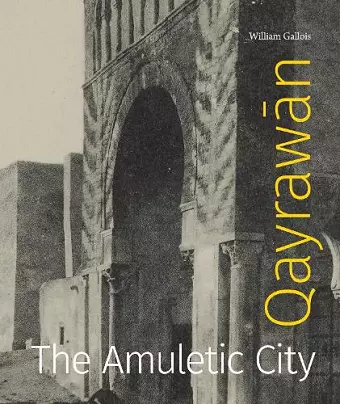Qayrawān
The Amuletic City
Format:Hardback
Publisher:Pennsylvania State University Press
Published:21st Feb '24
Should be back in stock very soon

In the last years of the nineteenth century, the Tunisian city of Qayrawān suddenly found itself covered in murals. Concentrated on and around the city’s Great Mosque, these monumental artworks were only visible for about fifty years, from the 1880s through the 1930s. This book investigates the fascinating history of who created these outdoor paintings and why.
Using visual archaeological methods, William Gallois reconstructs the visual history of these works and vividly brings them back to life. He locates pictorial records of the murals from the backdrops of photographs, postcards, and other forms of European ephemera. In Qayrawān, he identifies a form of religious painting that transposed traditional aesthetic forms such as house decoration, embroidery, and tattooing—which lay exclusively within the domains of women—onto the body of a conquered city. Gallois argues that these works were created by women as a form of “emergency art,” intended to offer amuletic protection for the community, and demonstrates how they differ markedly from “classical” Islamic antecedents and modern modes of Arab cultural production in the Middle East and North Africa.
Based on extensive archival research, this study is both a record of a unique moment in the history of art and a challenge to rethink the spiritual force and agency of a group of anonymous female artists whose paintings aspired to help save the world at a time of great peril. It will be welcomed by scholars of art history, Islamic studies, Middle East studies, and the history of magic.
“This is a remarkable piece of writing, one that breaks new ground in methods of approaching and interpreting the vast corpus of photographic imagery that has been produced by colonial occupiers of the Arab world. . . .Qayrawān: The Amuletic City shows how photo-historians can move beyond these issues to enrich our understanding of the creative, religious and cultural practices of the past.”
—James Downs Photographica World
“Gallois’s magnifying-glass-close archaeology of late nineteenth-century photographs, postcards, and related ephemera provides an ideologically engaging model for rethinking visual cultures of colonized people. Details accidentally captured in hegemonic images reveal push-back tactics and truths too long ignored. Unobtrusive graffiti on the walls of the Great Mosque and other buildings of Qayrawān (Kairouan), Tunisia, was talismanic expression by local women seeking to protect their communities from the ignominious physical and epistemic violence of racialized French pretense. Brilliant.”
—Allen Roberts, Coeditor of Devotional Spaces of a Global Saint: Shirdi Sai Baba’s Presence
ISBN: 9780271095271
Dimensions: 241mm x 203mm x 21mm
Weight: 885g
208 pages